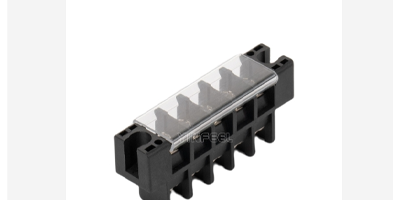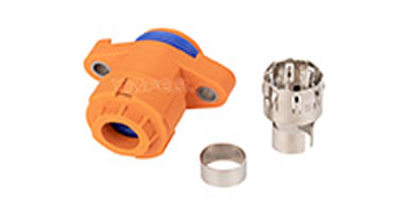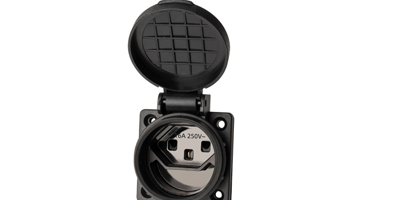In the dynamic realm of electrical connection technology, the Bar-Type Screw Fastening Terminal Block has witnessed a remarkable journey of evolution, propelled by a constellation of technological innovation drivers.
I. The Quest for Enhanced Connectivity Efficiency
The fundamental impetus behind the innovation of Bar-Type Screw Fastening Terminal Blocks is the pursuit of heightened connectivity efficiency. In the early days, traditional terminal blocks were often cumbersome and time-consuming to wire. The bar-type design, with its linear arrangement of screw fastening points, emerged as a solution to streamline the connection process. Engineers recognized the need for a more organized and accessible way to terminate multiple wires. For example, in industrial control panels where numerous sensors and actuators needed to be connected, the bar-type layout allowed for a more systematic and rapid wiring installation. This initial innovation significantly reduced the time and effort required to establish electrical connections, enhancing overall productivity in electrical assembly operations.
II. Material Advancements for Superior Performance
The evolution of materials used in Bar-Type Screw Fastening Terminal Blocks has been a crucial driver. Traditional terminal blocks were primarily made of basic plastics and metals. However, as the demands for higher electrical conductivity, better heat dissipation, and enhanced durability grew, new materials came into play. High-quality engineering plastics with improved flame retardant properties and mechanical strength were developed. These plastics could withstand higher temperatures and resist environmental factors such as moisture and chemicals, ensuring the long-term reliability of the terminal blocks. Simultaneously, the choice of conductive metals for the screw and terminal contacts became more refined. Materials with lower resistivity and better corrosion resistance, such as certain alloys, were adopted. This not only reduced power losses during current transmission but also increased the lifespan of the terminal block, especially in harsh industrial environments where corrosive substances were present.
III. Adaptability to Diverse Electrical Requirements
Another significant driver is the need for adaptability to a wide spectrum of electrical requirements. With the proliferation of different electrical devices and systems, Bar-Type Screw Fastening Terminal Blocks had to evolve to accommodate various voltages, currents, and wire gauges. Manufacturers started developing terminal blocks with adjustable screw tightening torque, allowing for precise control of the connection force. This was essential to ensure reliable contact for both thin and thick wires, as well as for different current-carrying capacities. For instance, in power distribution applications where high currents were involved, the terminal blocks were designed to handle heavy-duty wires and maintain a stable connection under significant electrical loads. In contrast, in low-power electronic circuits, they could also be adjusted to work with finer gauge wires without compromising the connection integrity.
IV. Miniaturization and Space Optimization Trends
The trend towards miniaturization and space optimization in modern electronics has had a profound impact on the evolution of Bar-Type Screw Fastening Terminal Blocks. As electronic devices became smaller and more compact, the terminal blocks had to follow suit. Engineers focused on reducing the overall size of the terminal blocks while maintaining or even improving their performance. This led to the development of more compact screw designs and optimized housing shapes. The spacing between the screw fastening points was also carefully engineered to allow for denser wire connections in a limited space. In applications like printed circuit boards and compact electrical enclosures, these miniaturized Bar-Type Screw Fastening Terminal Blocks enabled more efficient use of space, facilitating the integration of complex electrical systems without sacrificing connectivity.
V. Automation and Mass Production Demands
The increasing demand for automation in manufacturing and the need for mass production of terminal blocks have spurred further innovation. To meet the requirements of high-speed assembly lines, Bar-Type Screw Fastening Terminal Blocks were designed with features that facilitated automated installation. For example, the screw heads were standardized and shaped to be easily gripped by robotic tools. The terminal blocks also incorporated alignment features and snap-fit mechanisms that allowed for quick and accurate positioning during automated assembly. Additionally, quality control processes were integrated into the manufacturing line. Advanced testing techniques, such as automated electrical continuity testing and insulation resistance measurement, were implemented to ensure that each terminal block met the required quality standards. This not only increased production efficiency but also improved the overall reliability of the terminal blocks in the market.
In conclusion, the Bar-Type Screw Fastening Terminal Block has evolved in response to a multitude of technological innovation drivers. From the pursuit of connectivity efficiency and material advancements to adaptability, miniaturization, and automation, each aspect has contributed to its transformation into a highly sophisticated and versatile electrical connection component. As technology continues to progress, it is certain that these terminal blocks will continue to adapt and innovate, meeting the ever-evolving needs of the electrical and electronics industries.







